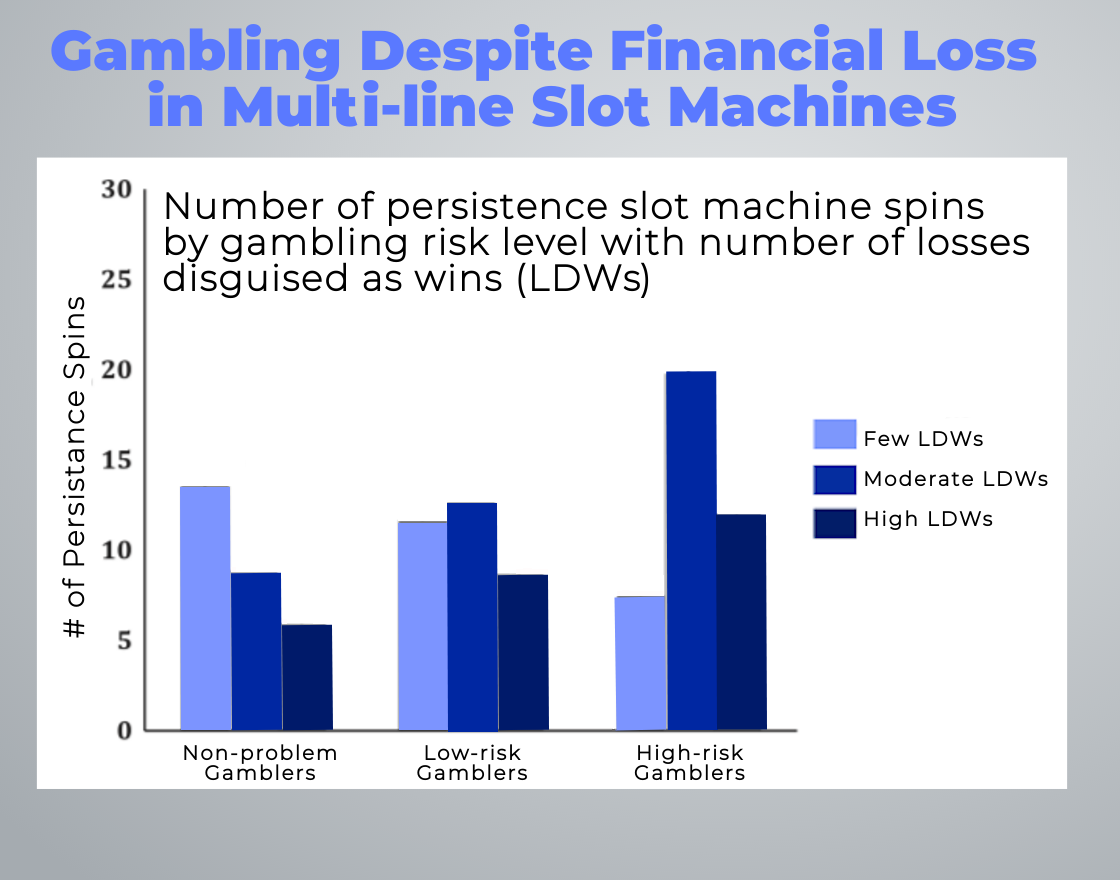Did you know that slot machines are the most popular type of gambling game in the United States and Canada? Often when playing on a multi-line slot machine, a player will gain credits on a play (and get rewarded with celebratory sounds and animations), but the credits gained are fewer than the credits wagered (e.g., 20-cent gain on a 25-cent wager). Researchers call this a “loss disguised as a win” (LDW). This week, The WAGER reviews an experimental study by Candice Graydon and colleagues that examines how gamblers with different risk profiles respond to LDWs.
What was the research question?
The authors investigated how people with different levels of problem gambling severity continue to play slots depending on how often they were exposed to LDWs.
What did the researchers do?
Using data from 132 experienced gamblers in a simulated casino laboratory in Waterloo, Canada, the researchers assessed problem gambling symptoms with the Problem Gambling Severity Index. They studied participants’ play patterns during actual slots spins. Each spin yielded either a net win or an LDW. The researchers decided whether participants got few or many LDWs. They used ANOVA tests to determine how (1) problem gambling symptoms and (2) amount of LDWs influenced participants’ persistence.
What did they find?
The findings show that high-risk gamblers persisted the longest when exposed to a moderate amount of LDWs. On the other hand, non-problem gamblers persisted the longest when confronted with the least amount of LWDs. Low-risk gamblers were not sensitive to the frequency of LDWs.

Figure. Number of persistence slot machine spins by gambling risk level with number of losses disguised as wins (LDWs). “Persistence slot machine spins” refers to the number of continued spins after each participant was given the opportunity to stop playing at any time after playing 100 spins. Adapted from Graydon et al. (2018). Click image to enlarge.
Why do these findings matter?
The main finding indicating that high-risk gamblers persist more when confronted with a moderate (vs. low) amount of LDWs suggests that this population should potentially be advised against playing slot machines if they want to gamble in moderation, or at least learn to spot LDWs. The results are important for responsible product design for manufacturers of electronic gaming machines, since LDWs might increase the extent to which high-risk gamblers continue to play despite incurring losses. Programs that educate all players about LDWs and other slot machine features might reduce problem gambling behavior.
Every study has limitations. What are the limitations in this study?
Since the sample only included experienced gamblers, these results might not generalize to other gamblers. The external validity of the findings in the real world might also be limited, since the observations took place in a simulated casino lab instead of an actual land-based or online casino.
For more information:
Do you think you or someone you know has a gambling problem? Visit the National Council on Problem Gambling for screening tools and resources. For additional resources, including gambling and self-help tools, please feel free to visit The BASIS Addiction Resources page.
— Eric R. Louderback, Ph.D.
What do you think? Please use the comment link below to provide feedback on this article.





bong88 January 14, 2020
Great website! Please keep up the good work because your website is excellent!